Frontiers Communications
Editor
Editor
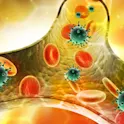
Impact analysis
01 Nov 2015
By Pascal Rocha da Silva, Frontiers analyst Frontiers in Microbiology was launched in 2010. In just 4 years, it has become the 5th largest and the 12th most-cited Microbiology journal in the world. The Impact Factor (IF), defined as the total number of citations in a given year divided by the number of citable articles over the previous two-year period, is the most commonly accepted metric of journal quality (but not of an individual paper or researcher). It was formally established by the Institute for Scientific Information (ISI) in 1975. As the IF can be heavily skewed by a few highly-cited papers, total citations generated over the same two-year period provide a more accurate indication of the overall influence or impact of the articles published by a journal in a field. Frontiers is a pioneer in the use of article-level and author-level metrics and encourages every author to use these to track the development of his or her readership on a more granular level. d. Analysis within the category of Microbiology There are 119 journals listed in the category of Microbiology in the 2014 Journal Citations Reports (JCR) provided by Thomson Reuters in 2015. Frontiers in Microbiology is one of the 15 Gold open-access journals. Below, the results of our comparative analysis on the […]

Robotics and AI
30 Oct 2015
Frontiers Science Hero: Mel Slater from Frontiers on Vimeo. Prof. Mel Slater has always been intrigued by the science that lies behind virtual reality. “I think one of the things that fascinated me about it was the question why people, when they go into a virtual reality even though what they see may not look real, they nevertheless have a strong illusion that what is happening is real and also a strong illusion that they are in the virtual place,” he said. Mel Slater is an ICREA Research Professor at the University of Barcelona, and became Professor of Virtual Environments at University College London in 1997. Slater started working in the area of virtual reality during the early 1990s with the aim of understanding our mindset when it comes to a virtual world. “I set out to try to understand why this illusion happens and what factors we as engineers can introduce into our applications to promote those feelings and realistic responses to virtual reality,” he said. The power of virtual reality Throughout his career, Slater has made several important discoveries. “I was one of the first people in this field who worked in this area of understanding the impact […]

Frontiers news
29 Oct 2015
In poetry we often find the metaphor that our lives are like rivers, but how is the life of a river – inside a river? John Gardner is trying to understand this better by analyzing how its components evolve and change during the course of the river, moving with its flow. He is currently doing his PhD at the Nicholas School of the Environment at Duke University. His research group is devoted to the study of natural waters, and his work is focused on the role of water columns in rivers, where he seeks the connection between the shape of rivers and streams and ecosystem functions. Moreover, his research is part of a broader multidisciplinary program for Wireless Intelligent Sensor Networks (WISeNet), joining research groups from different fields of environmental, computer, and engineering science, which are collaborating in the study of a more general topic, sensing: how we perceive and sense the environment surrounding us. In his research, John Gardner observes rivers from different reference frames (moving and stationary) and examines how water and matter move through river channels. For this purpose, he uses sensors developed in collaboration with his research group (called HydroSpheres) which allow him to mimic a particle moving and evolving […]

Health
26 Oct 2015
This month’s Staff Pick comes from Tania Pernes. Tania is an Editorial Project Manager at Frontiers and is responsible for growing our Health Journals. The article she selected as her staff pick is currently the most successful article in Frontiers in Public Health with more than 28,000 views. Frontiers Staff Pick: Energy drink consumption in Europe: a review of the risks, adverse health effects, and policy options to respond As an athlete, my coach used to mention the potential of energy drinks on post-workout recovery or between high intense exercises. Personally I was never a fan of sugary drinks and was always skeptical about them. Fridays were the only days I could go out for a drink or two with my friends. After rejecting the energetic drinks at the gym, I consumed them at the club without even thinking about it. The lack of information from the young community, aggressive marketing strategies and the unawareness by those who we trust on a family level is quite a cocktail for our health. This article gave support to my skepticism regarding these drinks and I now better understand the risks and consequences to my health. I highly recommend this to anyone, but in […]

Life sciences
22 Oct 2015
Happy National Chemistry Week to you all! This week is a great opportunity for us to support the importance and value of Chemistry in our lives (plus it is a lot of fun!).
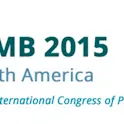
Life sciences
21 Oct 2015
Going to IPMB 2015 in Iguazú Falls, Brazil? Meet Frontiers at the 11th International Congress of Plant Molecular Biology this October 25 – 30! Come chat with us about Open Access publishing, interactive peer-review, becoming an editor, or about hosting your very own Research Topic! With a Research Topic, you can spotlight your very own research area by editing a collection of cutting-edge peer-reviewed articles. Take a look at this successful Research Topic in Frontiers in Plant Science: Molecular basis of fruit development has had over 25’000 views and is available as a freely downloadable e-book! You can learn more about Research Topics in this brochure. We are looking forward to seeing you at IPMB 2015!

Life sciences
21 Oct 2015
In recognition of the “Chemistry Colors our World” theme of Chemistry Week today’s experiment is a colorful one – we are conducting the red cabbage pH indicator experiment.

Open science and peer review
20 Oct 2015
Selected news, views and information on Open Science and scholarly publishing from the past week

Life sciences
20 Oct 2015
By Brian Boyle Magnetic fields are everywhere. Every electric circuit creates one. They are utilized in such diverse applications as real time brain imaging (fMRI), and in developing future means of transport (MAGLEV trains). The earth itself, with its north and south poles, emits a magnetic field which protects us from dangerous solar radiation – and radiation from further afield. The `magnetospheres` interaction with this radiation is revealed, at least indirectly, in the beauty of the aurora borealis. Thankfully, we don`t have to trek to the poles to visualize the shape of magnetic fields. The unique behavior of ferrofluids, as they trace the field lines of readily available magnets in 3 dimensions, give us an insight into how different the world would look if we could see the magnetic fields which surround us on a daily basis. The key property of ferrofluids stem from the tiny particles of a compound dispersed in a liquid, all sharing one thing in common – ferromagnetism, or the tendency to respond strongly to magnetic fields. How tiny? A human hair is 75,000 nanometres across, with ferromagnetic particles typically from 1 to 10 nanometres. A common ferromagnetic metal is iron (Fe), and the most commonly […]

Life sciences
19 Oct 2015
In the office today we are making snow with a sodium polyacrylate superabsorbent polymer.
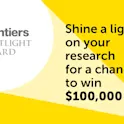
Frontiers news
16 Oct 2015
To recognize the most active, collaborative and engaging Research Topic across the entire Frontiers community, we have established the Frontiers Spotlight Conference Award.

Health
16 Oct 2015
Prof. Ferdinand Köckerling is an associate professor of surgery and a department head at the Vivantes Hospital in Berlin, more specifically at the Academic Teaching Hospital of Charité Medical School.

Young Minds
15 Oct 2015
Frontiers for Young Minds is excited to bring its team together for a live event as part of the Bay Area Science Festival. Three scientists will not only be writing about their research for younger audiences, but will also face the challenge of presenting their work directly to a live public audience. Those scientists will then face a panel of some of our most experienced Young Reviewers, ages 9-17. Our Young Reviewers will push these researchers to better explain how and why their research is important to the public, and provide feedback on how to make their work more interesting and understandable for their young peers. This event will not only provide a live glimpse into the mechanisms behind every Young Minds article – involving young people directly in the scientific process – but will also provide a chance to get to know some of our Chief Editors, learn about cutting-edge science, and share in a final highlight about music and the brain. We look forward to seeing you there. Event Details: At Chabot Space & Science Center November 6th, 6:30-8:30 pm Due to a generous donation in the names of Judah Carillo and Golden Freedman, all tickets to this […]
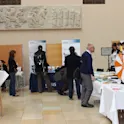
Open science and peer review
15 Oct 2015
Frontiers had the pleasure of attending The Open Access Tage 2015 on the 7th and 8th of September, this year at the University of Zurich.
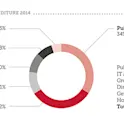
Open science and peer review
13 Oct 2015
As a publisher, it is our duty to ensure that the business fundamentals behind Frontiers are sound and sustainable. We are responsible towards the community, to the more than 60,000 researchers who have formally joined our editorial boards, to the 140,000 authors who have published with us, and to our employees.
Get the latest research updates, subscribe to our newsletter